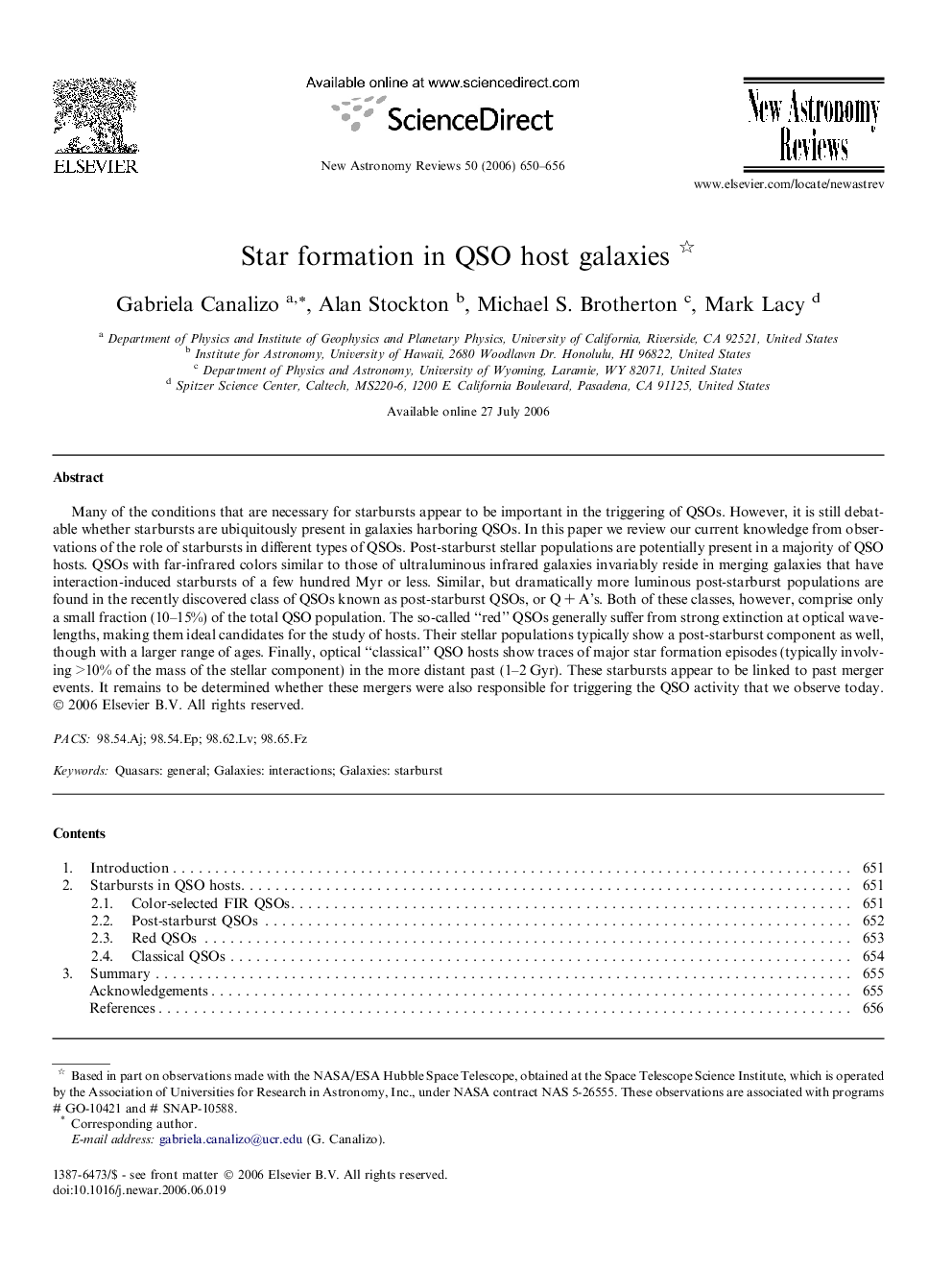| کد مقاله | کد نشریه | سال انتشار | مقاله انگلیسی | نسخه تمام متن |
|---|---|---|---|---|
| 1780298 | 1523804 | 2006 | 7 صفحه PDF | دانلود رایگان |

Many of the conditions that are necessary for starbursts appear to be important in the triggering of QSOs. However, it is still debatable whether starbursts are ubiquitously present in galaxies harboring QSOs. In this paper we review our current knowledge from observations of the role of starbursts in different types of QSOs. Post-starburst stellar populations are potentially present in a majority of QSO hosts. QSOs with far-infrared colors similar to those of ultraluminous infrared galaxies invariably reside in merging galaxies that have interaction-induced starbursts of a few hundred Myr or less. Similar, but dramatically more luminous post-starburst populations are found in the recently discovered class of QSOs known as post-starburst QSOs, or Q + A’s. Both of these classes, however, comprise only a small fraction (10–15%) of the total QSO population. The so-called “red” QSOs generally suffer from strong extinction at optical wavelengths, making them ideal candidates for the study of hosts. Their stellar populations typically show a post-starburst component as well, though with a larger range of ages. Finally, optical “classical” QSO hosts show traces of major star formation episodes (typically involving >10% of the mass of the stellar component) in the more distant past (1–2 Gyr). These starbursts appear to be linked to past merger events. It remains to be determined whether these mergers were also responsible for triggering the QSO activity that we observe today.
Journal: New Astronomy Reviews - Volume 50, Issues 9–10, November 2006, Pages 650–656